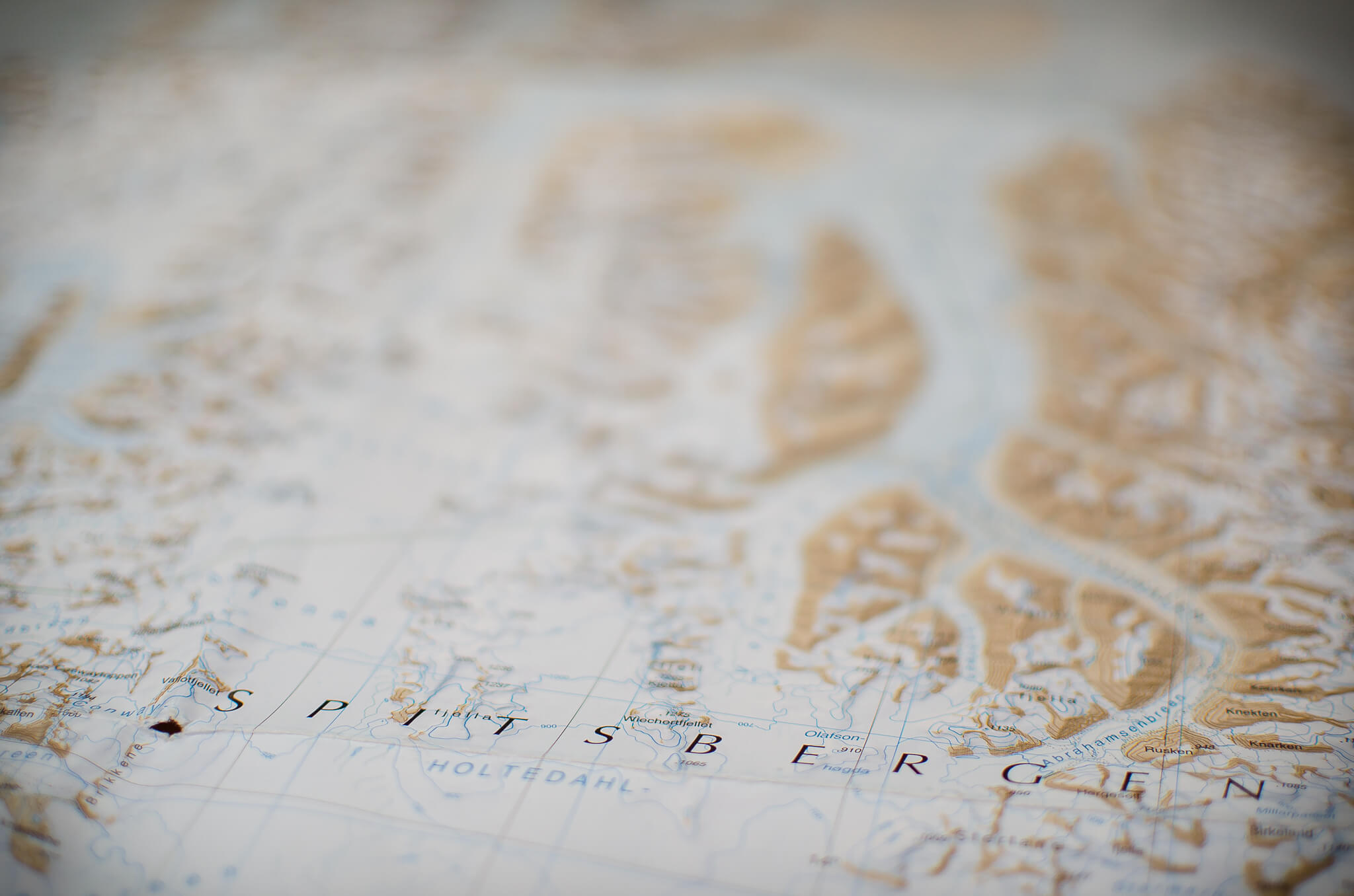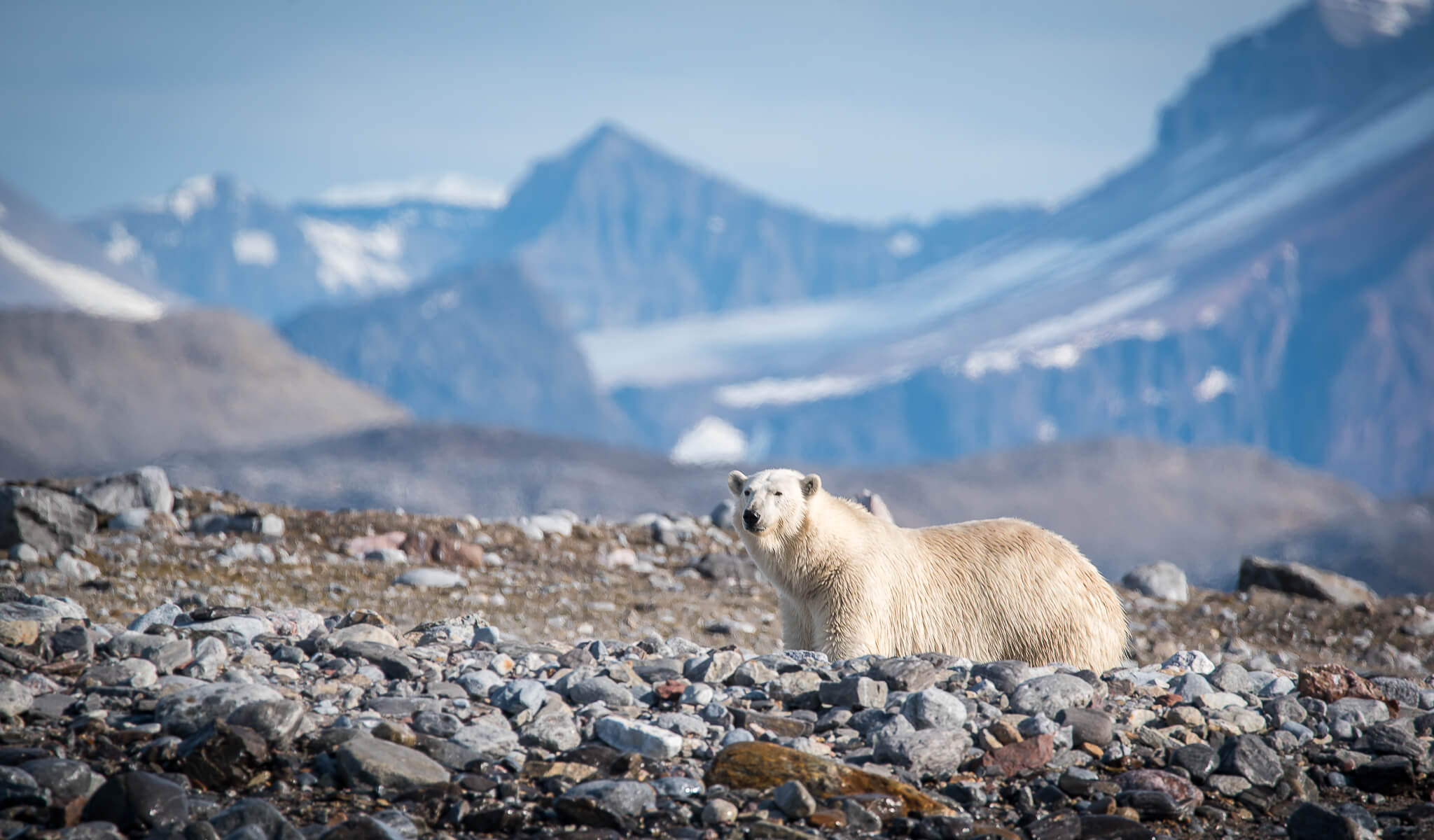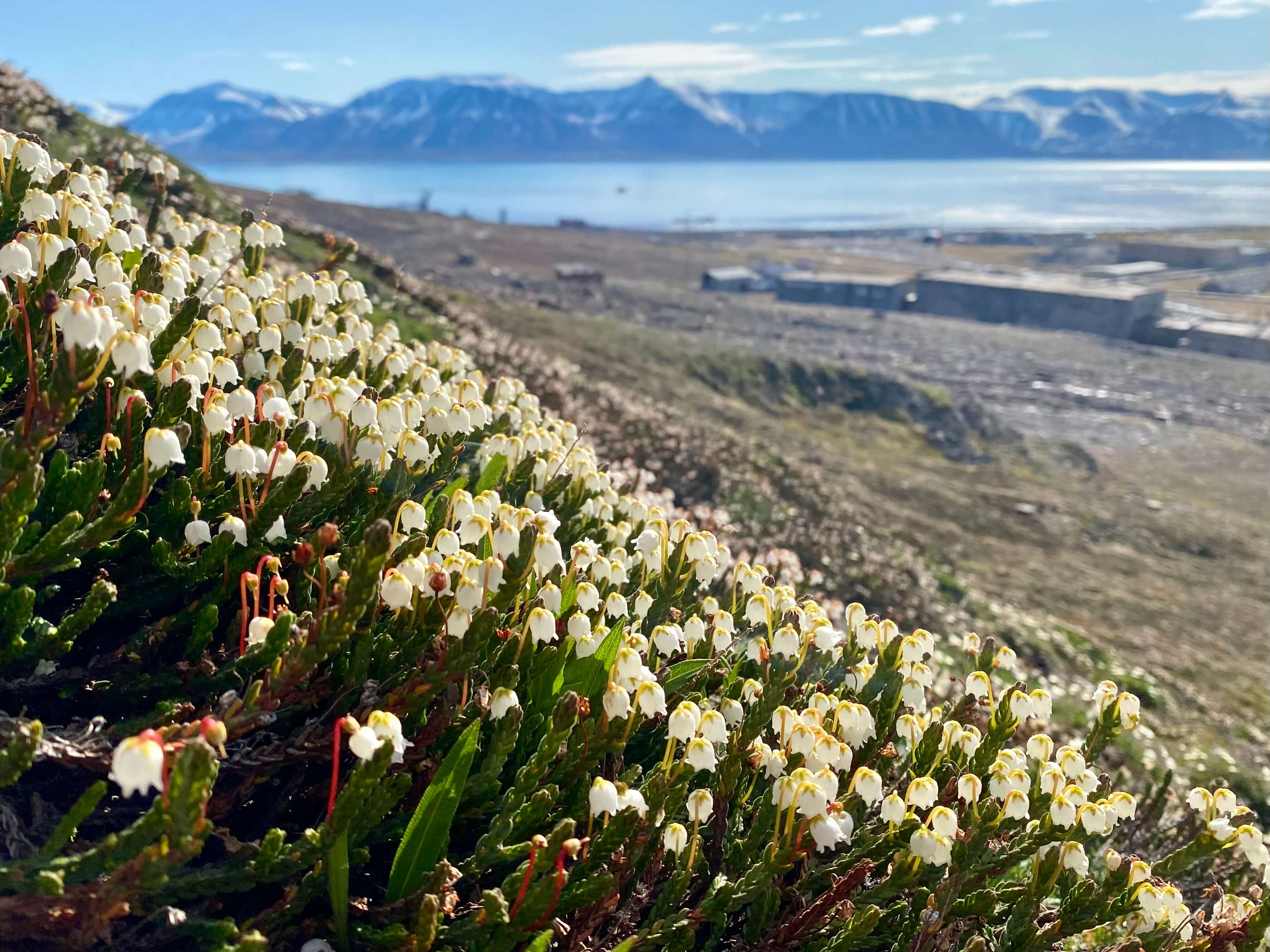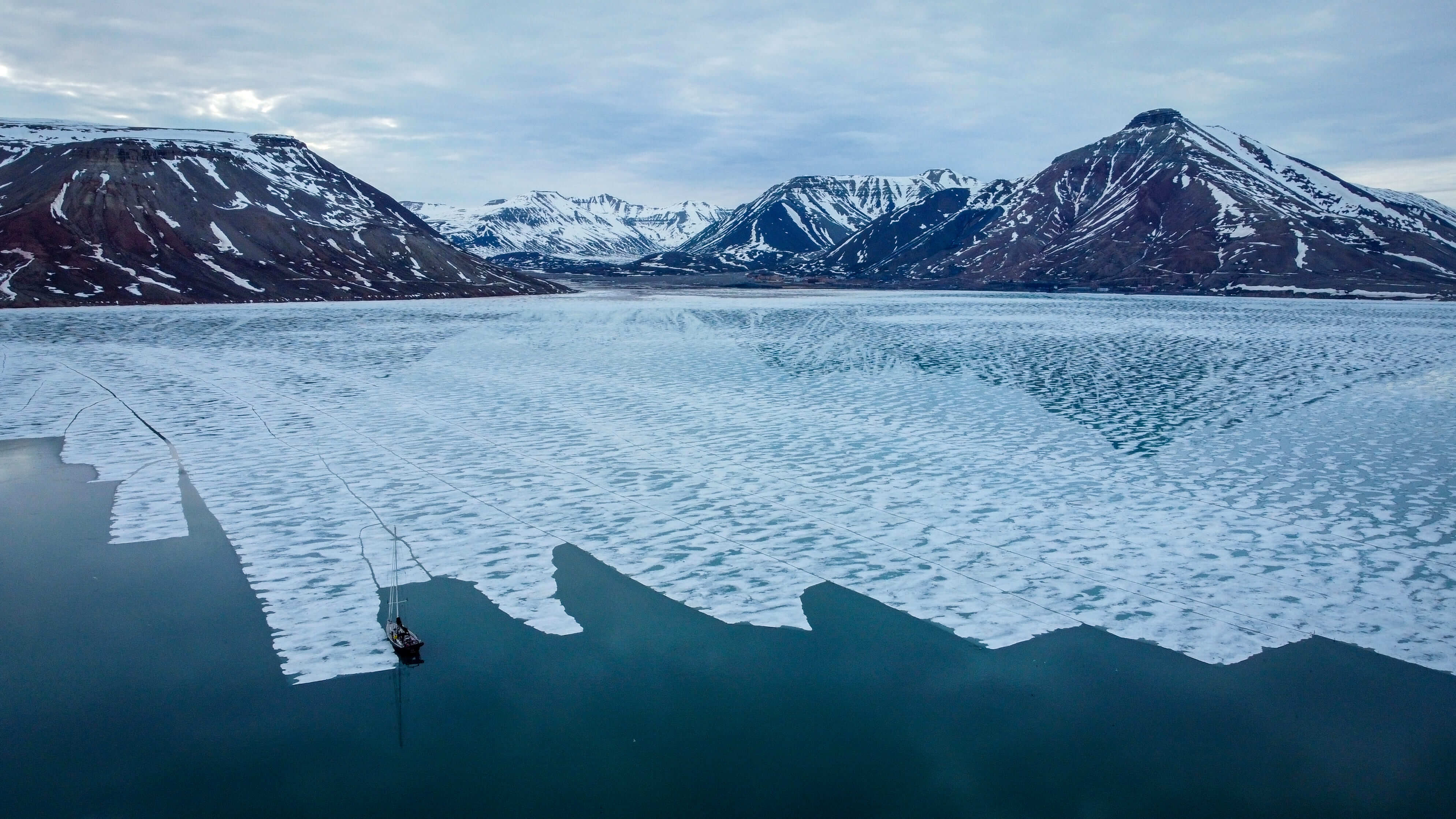What is Svalbard?
The Svalbard archipelago, of which Svalbard is the main island, lies between the 74ᵉ and 81ᵉ parallel north, around 1,000 kilometers from the North Pole. The environment here is extremely wild and delicate. The mix of mountains, glaciers and fjords makes the landscape unique.

What's more, from May to August, there's not a single night in this region. The midnight sun makes sailing and other activities easy to plan at any time of day!
The fauna is particularly rich. Whales, seals and walruses, as well as reindeer and arctic foxes, are easily spotted. The archipelago is also a sanctuary for thousands of migratory birds, which come to nest on its steep cliffs and isolated islands. But the emblematic figure of Svalbard remains the polar bear.
Majestic and impressive, it embodies the power and vulnerability of the Arctic. It's important to remember that here, it's the king of the place. So it's imperative to do everything possible to avoid disturbing its tranquillity or putting yourself in danger.

Svalbard 's climate is softened by the upwelling of the Gulf Stream, which reaches the entrance to Isfjord near Longyearbyen. Thanks to this, part of the west coast remains relatively ice-free for much of the year. However, conditions can vary considerably from season to season.
The best time to sail is generally from June to August. Don't forget that even if it's summer, good heating and an insulated boat are essential.
Svalbard belongs to Norway, but enjoys a special status. It is administered by the Governor of Svalbard (Sysselmester), based in Longyearbyen. Although the archipelago is Norwegian, it is not part of the Schengen area, which means you have to deal with the authorities when leaving (or entering) Norway by boat.

The only "real" town in the archipelago is Longyearbyen, where the majority of services are located: port, airport, accommodation and shops. Not a very pleasant town, but very practical for logistics.
In addition to Longyearbyen, here are the archipelago's other "inhabited" places:
Barentsburg is a Russian mining town where around 400 people live year-round. An astonishing stop, with an obligatory detour to the town bar where they brew their own beers! Caution: port not well protected in strong winds.
Pyramiden is a former Soviet mining town abandoned in the 1990s. It's possible to moor up and visit it. With its buildings frozen in time, statues of Lenin and polar silence, it's a truly timeless experience. A small, well-protected recent quay.
Ny-Ålesund, meanwhile, is a scientific village inhabited by research teams from all over the world. It's possible to dock here, but space on the quay is limited, and costs are relatively high. This small village is surrounded by splendid mountains, and offers an exceptional view of the "crown" of King Bay, at the bottom of the fjord. Fuel available on site.
Services in Longyearbyen
Airport (LYR): just a few minutes from the port, regular flights in summer (Norwegian, SAS).
Supermarket: good supply, but it's advisable to order fresh food (sailboat supplies) at least 14 days in advance to avoid stock-outs. It's possible to get kicked out at the checkout if you buy too much... There's also a Thai grocery store on the main street (yes, it's true!).
Alcohol: sales are limited; restrictions exist, particularly for foreigners arriving by boat, often linked to evidence of flights to LYR.
Facilities: hotels, restaurants, museums, various tourist activities. Hiking from the valley floor (rifle required).
Formalities
- As this region is outside the Schengen area, it is essential to obtain an exit permit from the local police when leaving Norway.
- It is compulsory to obtain a permit from the authorities before embarking on a trip there. Formalities can be completed online with the local authorities in Longyearbyen. See: https: //www.sysselmesteren.no/ This permit must be requested more than 8 weeks in advance (the earlier, the better).
- To go ashore in Svalbard, you'll need a large-calibre rifle for protection against polar bears. You can only rent a gun in Longyearbyen if you have obtained a permit in advance (more than 8 weeks in advance).
This measure is not to be taken lightly. Disembarkation must be carried out in accordance with the rules of the art, to avoid a bad encounter on land. You don't want to be attacked by a bear, and you don't want to hurt it either.
Environment
This territory is wild and its environment very fragile. All travelers should keep in mind that they have the privilege of being a visitor to these unique places. Respecting nature and the animals that live there is essential to keeping this place intact. Your boat should be ready to store all the rubbish on board for the duration of your trip, including organic waste*.

Plan ahead and prepare your boat! You won't find much boating equipment out there, nor much specialized manpower. So make sure you have the equipment and knowledge you need for every eventuality.
Search and Rescue
Although the Norwegians in Svalbard are very efficient and well-equipped, you should not rely on outside help during your stay. Be prepared for all eventualities without outside help. Your first-aid kit must be complete and relevant.
Don't take unnecessary risks; remember that you're far away from everything. Rescue teams are not there to risk their lives for the wrong decision of an uninformed traveler.
Longyearbyen's hospital offers minimal service, and most people are transferred to Tromsø in case of complications. Even taking a blood test on site is not easy (I tested it!).
Itinerary
Svalbard is magnificent from every angle. For me, every fjord is worth the detour. So there's no wrong choice.
Keep in mind
Maps are limited for northern Svalbard (near 80ᵉ); check your maps before departure.
Eastern Svalbard: less well mapped, this region is dangerous for the ice, which often remains until August, and for the large bear population, which multiplies the chances of an encounter on land.
There are several protected areas in the region. Some bird sanctuaries must not be approached closer than 300/500 m, while other historic or particularly fragile sites are strictly forbidden. A good study of the map is essential before any trip. Remember, you are guests in these places. Heavy fines may apply for non-compliance.
The areas in front of glacier fronts are, for the most part, unmapped. Beware, the bottom may rise rapidly due to an underground moraine!
Finally
If you're going to Svalbard, make the most of every moment in these magical places. You're privileged to be there, so make the most of it.

To see more photos of Svalbard: Gallery
And if you're afraid of preparing for this trip (which you should be), or if you'd like to go with a group of connoisseurs in the first place, visit our website. We've been offering trips to the polar regions for over 12 years!
Written by Emmanuelle Dumas, second-in-command on LifeSong, Garcia 68
.jpg)
An explorer at heart and guide by profession, Emmanuelle Dumas combines travel, field observation and drawing. Her journey has taken her from Italian trails to the remote regions of the Antarctic Peninsula, where she transformed her sketches into watercolors to support an expedition. Since then, she has pursued her artistic work with the same exacting standards: capturing the moment, revealing the beauty of landscapes and cultivating a creativity nourished by adventure. Her works bear witness to a precise, sensitive eye, deeply attached to the world she travels through.
Also to be discovered...











.jpg)


%402x.svg)